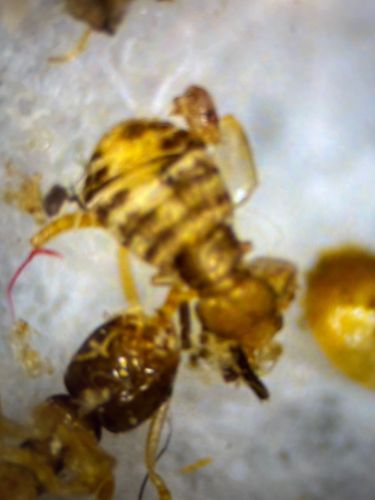Army Ant (likely Eciton burchellii worker)
Scientific Name: Eciton spp. (specifically resembles Eciton burchellii based on banding and robust appearance)
Order & Family: Order: Hymenoptera, Family: Formicidae, Subfamily: Dorylinae (often referred to as army ants)
Size: Workers vary greatly in size (polymorphic); minor workers can be 3-7 mm, while major workers (soldiers) can be up to 12-15 mm, excluding mandibles. The queen can be considerably larger.

Natural Habitat
Tropical and subtropical regions, predominantly rainforests and other forested areas in Central and South America for the genus Eciton. They are terrestrial and can be found on the forest floor, under leaf litter, and in rotting wood.
Diet & Feeding
Primarily predatory, preying on a wide range of invertebrates, including other ants, spiders, insects, and their larvae. They also consume other arthropods that cannot escape their foraging columns. Some species may opportunistically consume small vertebrates, though this is less common.
Behavior Patterns
Army ants are known for their nomadic foraging strategy, forming massive foraging columns that can contain hundreds of thousands or even millions of ants. They do not build permanent nests but instead alternate between a nomadic phase, where they move daily, and a statary phase, where they settle in a bivouac to raise brood. During the statary phase, the workers form the bivouac by clinging to each other, creating a living nest.
Risks & Benefits
Risks: Army ants can deliver painful bites due to their powerful mandibles, especially the larger soldier ants. While not typically a threat to humans unless provoked or trapped, their foraging columns are to be avoided. Some species might enter human dwellings in rural areas, but they are generally not considered household pests in urban environments. Benefits: As apex predators in their ecosystems, they play a crucial role in controlling insect and arthropod populations, contributing to biodiversity and ecosystem balance. They also help in nutrient cycling as they consume and process biomass.
Identified on: 9/4/2025